
The San Jose Grand Prix was an annual street circuit race in the Champ Car World Series in San Jose, California. The race had three different title sponsors over the course of its three-year existence, being known as the Taylor Woodrow Grand Prix of San Jose in 2005, Canary Foundation Grand Prix of San Jose Presented by Taylor Woodrow in 2006, and the San Jose Grand Prix at Redback Raceway in 2007.

Myron Hubbard Hunt was an American architect whose numerous projects include many noted landmarks in Southern California and Evanston, Illinois. Hunt was elected a Fellow in the American Institute of Architects in 1908.

The Telluride Historic District encompasses a significant portion of the developed area of the former mining boom town of Telluride, Colorado. Telluride was founded in 1878, and was a major metals mining center until 1913. The historic district covers 80 acres (32 ha) of downtown Telluride and surrounding residential areas, as well as Lone Tree Cemetery, the town's first cemetery. It was declared a National Historic Landmark in 1961 for its well-preserved late boom-town architecture.

The Old Faithful Historic District in Yellowstone National Park comprises the built-up portion of the Upper Geyser Basin surrounding the Old Faithful Inn and Old Faithful Geyser. It includes the Old Faithful Inn, designed by Robert Reamer and is itself a National Historic Landmark, the upper and lower Hamilton's Stores, the Old Faithful Lodge, designed by Gilbert Stanley Underwood, the Old Faithful Snow Lodge, and a variety of supporting buildings. The Old Faithful Historic District itself lies on the 140-mile Grand Loop Road Historic District.
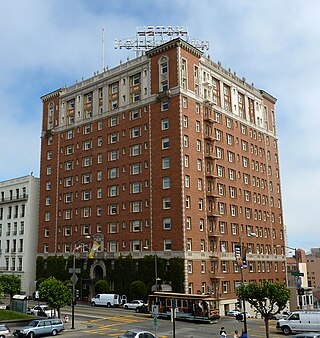
Weeks and Day was an American architectural firm founded in 1916 by architect Charles Peter Weeks (1870–1928) and engineer William Peyton Day (1886–1966).

The Scottish Rite Cathedral of San Antonio, Texas is located at 308 Avenue E in San Antonio. Construction began on it in 1922 and was completed in 1924, at a cost of $1.5 million.

There are nine historic districts in Meridian, Mississippi. Each of these districts is listed on the National Register of Historic Places. One district, Meridian Downtown Historic District, is a combination of two older districts, Meridian Urban Center Historic District and Union Station Historic District. Many architectural styles are present in the districts, most from the late 19th century and early 20th century, including Queen Anne, Colonial Revival, Italianate, Art Deco, Late Victorian, and Bungalow.

The Memorial United Methodist Church is a historic church in the village of Swanton, Vermont. Built in 1895, it is an architecturally distinctive example of Queen Anne architecture executed in brick. It was listed on the National Register of Historic Places in 2001.

The Beaverkill Valley Inn, formerly known as The Bonnie View, is located off Beaverkill Road north of Lew Beach, New York, United States. It is a large wooden hotel built near the end of the 19th century.

The Grosse Pointe Memorial Church (GPMC) is a church located at 16 Lake Shore Drive in Grosse Pointe Farms, Michigan, USA. it is a member of the Presbyterian Church, USA (PCUSA). It was designated a Michigan State Historic Site in 1990 and listed on the National Register of Historic Places in 1993.

Frederick C. Sauer was a German-American architect, particularly in the Pittsburgh, Pennsylvania, region of the late 19th and early 20th centuries.
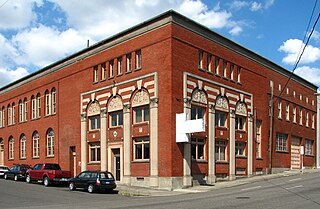
The Yale Union Laundry Building, also known as the Yale Laundry Building, the City Linen Supply Co. Building, Perfect Fit Manufacturing and simply Yale Union (YU), in southeast Portland, Oregon, is a two-story commercial structure listed on the National Register of Historic Places. Built largely of brick in 1908, and embellished with Italian Revival and Egyptian Revival decorations, it was added to the register in 2007. Two-story additions in 1927 and 1929 changed the original building into an L-shaped structure that shares a party wall with a building to the east.
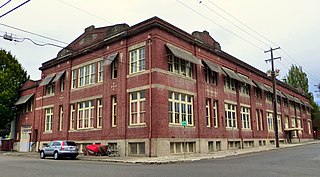
The Troy Laundry Building, located at 1025 Southeast Pine St. in Portland, Oregon, was designed by Ellis F. Lawrence in the early 1900s. It is considered a mixture of Colonial, Egyptian, and Renaissance Revival architecture. It is known for its large windows, tall brick walls, and decorative brickwork.
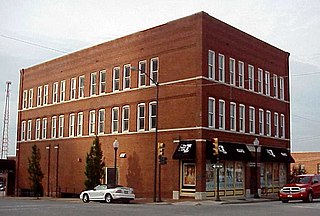
The Pierce Block is a historic building in downtown Tulsa, Oklahoma on the northeast corner of Third Street and Detroit Avenue, that was constructed as a hotel in 1909. According to the Tulsa Preservation Commission, it is the oldest remaining post-statehood hotel in Tulsa. Originally it was a few blocks west of the Midland Valley Railroad passenger station, which was at Third and Greenwood Avenue.
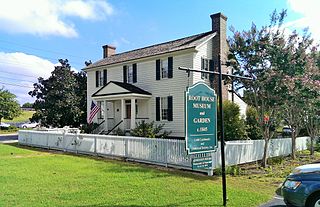
The Northwest Marietta Historic District is a 230-acre (93 ha) historic district in Marietta, Georgia that was listed on the National Register of Historic Places in 1975. It includes Late Victorian, Greek Revival, Plantation Plain, and other architecture. The district includes an area in downtown Marietta, with the southernmost point being south of Whitlock Avenue on McDonald Street, and runs out Kennesaw Avenue to Noses Creek in the northwest.

The Home Laundry is a historic building at 432 S. Arroyo Parkway in Pasadena, California. The building was constructed in 1922 for the Home Laundry Company, a laundry service founded by Pasadena businessmen Daniel M. Linnard, Arnold J. Bertonneau, and Edward K. Hoak. All three were well known in Pasadena, and Linnard had a national reputation for his work in the hotel industry. The company's building represented a new type of building design in Pasadena, as the company's office space and industrial space were both visually separated and structurally integrated. In addition, the building has an uncommon Tudor Revival design created by the local architecture firm Marston, Van Pelt & Maybury. The building's design features ornamental half-timbering on the front façade, coursed brickwork, gabled dormers above the second-story windows, and stone quoins at the corners. The building is the only Tudor Revival commercial or industrial building in Pasadena.
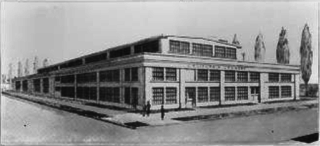
California Laundry was an early 1920s business in Hollywood, California, and in its day, possibly the city's largest business institution outside of the film studios. It was located on Vine Street. At the time it was established, the California Laundry was one of the few laundry businesses in the country in which each machine was driven by an individual motor, eliminating the possibility of a breakdown which would cripple the entire plant. The machinery used in the California Laundry was the largest single shipment of laundry apparatus ever sent to the Pacific coast.

Historic Hotels of America is a program of the National Trust for Historic Preservation that was founded in 1989 with 32 charter members; the program accepts nominations and identifies hotels in the United States that have maintained their authenticity, sense of place, and architectural integrity.

The Beezer Brothers were American architects active from the late 19th-century to the Great Depression. They were twins, who practiced together in western Pennsylvania before moving to Seattle, Washington in 1907 to participate in the city's rapid growth brought on by the Klondike Gold Rush. Best known for the many Catholic churches they designed, they also worked on domestic residences and municipal buildings. Their work on the west coast, while concentrated in Seattle, can be found from Los Angeles to San Francisco to Alaska, and inland to Montana. At least one church and two buildings are individually listed on the National Register of Historic Places, and several other buildings are contributing properties to several different National Historic Districts.

The Fairglen Additions is an example of Mid-century modern-style tract housing located in San Jose, California, US. Comprising 218 single-family houses within the Willow Glen neighborhood of San Jose, this district was built between 1959 and 1961. The additions were developed by real estate developer Joseph Eichler and designed by architectural firms Anshen & Allen, Jones Emmons & Associates, and Claude Oakland Architect & Associates. Thirteen distinct home plans were executed on approximately 6,000 square feet (560 m2) lots. These residences feature open floor plans that accentuate privacy and the seamless transition between indoor and outdoor living, characteristic of Eichler homes and subdivisions. The Fairglen Additions was officially recognized and listed on the National Register of Historic Places on June 6, 2019.























